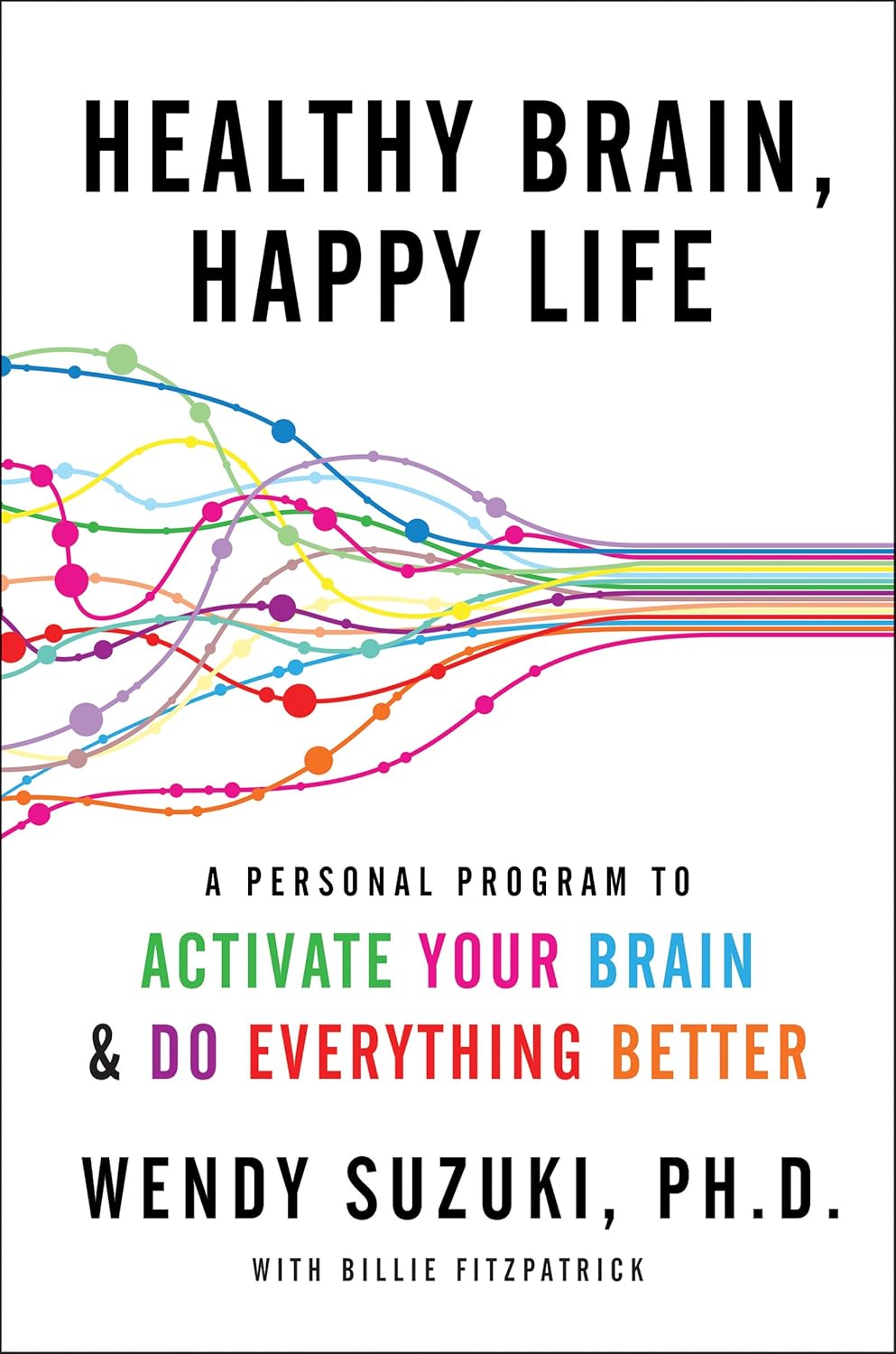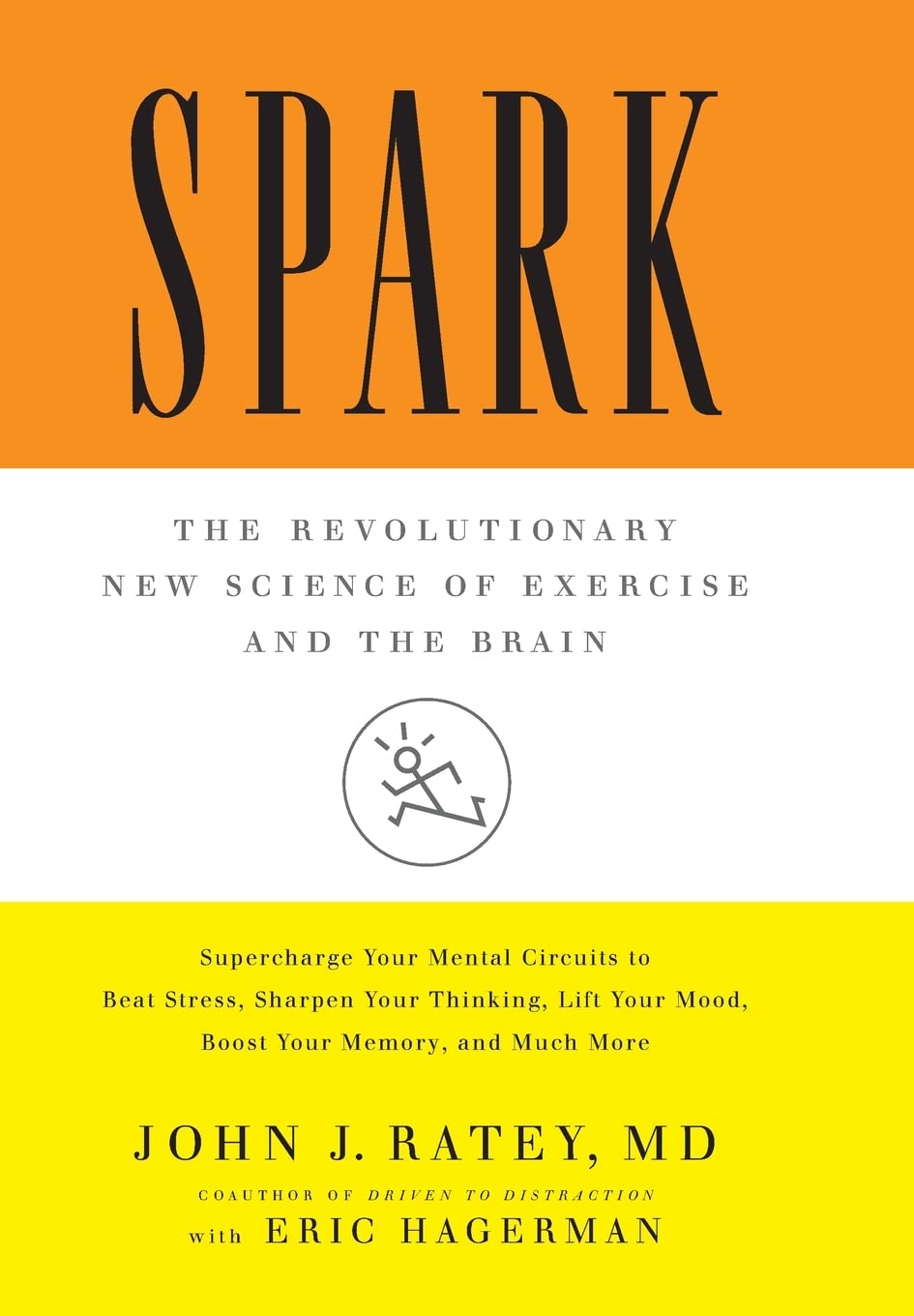This article looks at exercise and how it impacts neuroplasticity. As we stand on the threshold between the closing of one year and the dawn of another, it’s my pleasure to extend heartfelt wishes to you and your loved ones for a prosperous and fulfilling year ahead. Life is indeed shaped by our choices and actions; In this spirit of renewal, I would like to share some good news that contradicts the conventional wisdom I was taught during my training at USC PA school.
I was taught a definitive perspective on the nature of neurons, that they are finite—that each person is born with a specific number of these critical brain cells, which inevitably decline with age as they are lost annually without any hope for replenishment. However, I have some news to share with you regarding this long-held notion…
The implications of this new understanding are profound. Millions of people around the world are living with brain damage or neurological disorders, and until now, their options for treatment have been limited. But with the discovery of this new method for remediating brain damage, we’re poised to unlock new possibilities for recovery and rehabilitation. This is a game-changer for individuals, families, and communities affected by brain injury or disease.
Introduction to Exercise and Brain Health

Exercise is often touted as a key component of a healthy lifestyle, but its benefits extend far beyond physical fitness. Research has consistently shown that regular exercise has a profound impact on brain health, improving cognitive function and neuroplasticity, regulating emotions, and even promoting the growth of new brain cells (Suzuki, 2015). In fact, Wendy Suzuki, a neuroscientist and author, has stated that “the real point of exercise is to build and condition the brain” (Suzuki, 2015). This idea is supported by numerous studies, which have found that exercise can improve memory, attention, and learning, while also reducing the risk of cognitive decline and mental health issues (Hillman et al., 2016).
The benefits of exercise for brain health are not limited to short-term effects, but can lead to lasting changes in the brain’s structure and functionality. Exercise has been shown to promote neurogenesis, the growth of new brain cells, in areas such as the hippocampus, which is critical for long-term memory (Voss et al., 2013). Additionally, exercise has been found to increase the production of brain-derived neurotrophic factor (BDNF), a protein that supports the growth and survival of brain cells (Hillman et al., 2016). As one source noted, “exercise is like taking a little bit of Prozac and a little bit of Ritalin,” due to its ability to regulate neurotransmitters and improve mood (Ratey, 2008).
The importance of exercise for brain health cannot be overstated. With the increasing prevalence of sedentary lifestyles, it is more important than ever to prioritize physical activity and make it a regular part of our daily routines. As Suzuki noted, “we’re literally killing ourselves, and it’s a problem throughout the developed world. What’s even more disturbing is that inactivity is killing our brains, as well as physically shrinking them” (Suzuki, 2015). By incorporating exercise into our daily lives, we can take a significant step towards improving our overall health and well-being.
In addition to its physical benefits, exercise has also been shown to have a positive impact on mental health. Regular physical activity has been found to reduce symptoms of anxiety and depression, improve mood, and even reduce the risk of developing mental health disorders (Schuch et al., 2016). As one source noted, “exercise is a natural and effective way to improve mental health, without the negative side effects often associated with medication” (Harris et al., 2016). By prioritizing exercise and making it a regular part of our daily routines, we can take a significant step towards improving our overall mental health and well-being.
Exercise and Neuroplasticity, the Impact of Exertion
Exercise has a profound impact on the brain’s neurochemistry, influencing the production and regulation of neurotransmitters such as serotonin, dopamine, and noradrenaline. These neurotransmitters play a critical role in regulating mood, motivation, and emotional response, and exercise has been shown to increase their production and improve their function (Ratey, 2008). As one source noted, “exercise is a powerful tool for regulating neurotransmitters, and can have a significant impact on mood and emotional well-being” (Suzuki, 2015).
The impact of exercise on neurochemistry is not limited to the production of neurotransmitters, but also extends to the regulation of hormones and other neurochemicals. Exercise has been shown to increase the production of BDNF, which supports the growth and survival of brain cells (Hillman et al., 2016). Additionally, exercise has been found to reduce inflammation and oxidative stress, which can damage brain cells and contribute to cognitive decline (Voss et al., 2013). As one source noted, “exercise is a natural anti-inflammatory, and can have a significant impact on reducing inflammation and improving brain health” (Suzuki, 2015).
The neurochemical impact of exercise is not limited to the brain, but also extends to the body. Exercise has been shown to improve insulin sensitivity, reduce blood pressure, and improve cardiovascular health, all of which can have a positive impact on brain health (Hillman et al., 2016). As one source noted, “exercise is a powerful tool for improving overall health, and can have a significant impact on reducing the risk of chronic disease” (Schuch et al., 2016).
In addition to its impact on neurochemistry, exercise has also been shown to have a positive impact on brain structure and function. Exercise has been found to increase the volume of the hippocampus, a region critical for memory and learning, and to improve the integrity of white matter tracts, which are critical for communication between different brain regions (Voss et al., 2013). As one source noted, “exercise is a powerful tool for improving brain structure and function, and can have a significant impact on cognitive ability” (Suzuki, 2015).
Structural and Functional Changes in the Brain
Exercise has been shown to have a profound impact on the brain’s structure and function, leading to changes in the volume and integrity of different brain regions. One of the most significant effects of exercise is on the hippocampus, a region critical for memory and learning (Voss et al., 2013). Exercise has been found to increase the volume of the hippocampus, and to improve the growth of new neurons in this region (Hillman et al., 2016). As one source noted, “exercise is a powerful tool for improving memory and learning, and can have a significant impact on cognitive ability” (Suzuki, 2015).
In addition to its impact on the hippocampus, exercise has also been shown to have a positive impact on other brain regions, including the prefrontal cortex, which is critical for attention and decision-making (Hillman et al., 2016). Exercise has been found to improve the integrity of white matter tracts, which are critical for communication between different brain regions, and to increase the production of BDNF, which supports the growth and survival of brain cells (Voss et al., 2013). As one source noted, “exercise is a powerful tool for improving brain function, and can have a significant impact on cognitive ability” (Suzuki, 2015).
The changes in brain structure and function that occur with exercise are not limited to the brain, but also extend to the body. Exercise has been shown to improve insulin sensitivity, reduce blood pressure, and improve cardiovascular health, all of which can have a positive impact on brain health (Hillman et al., 2016). As one source noted, “exercise is a powerful tool for improving overall health, and can have a significant impact on reducing the risk of chronic disease” (Schuch et al., 2016).
In addition to its impact on brain structure and function, exercise has also been shown to have a positive impact on mental health. Regular physical activity has been found to reduce symptoms of anxiety and depression, improve mood, and even reduce the risk of developing mental health disorders (Schuch et al., 2016). As one source noted, “exercise is a natural and effective way to improve mental health, without the negative side effects often associated with medication” (Harris et al., 2016).
Enhancement of Cognitive Functions
Exercise has been shown to have a profound impact on cognitive function, improving attention, memory, and learning. One of the most significant effects of exercise is on attention, which is critical for learning and memory (Hillman et al., 2016). Exercise has been found to improve attention spans, and to reduce symptoms of attention-deficit/hyperactivity disorder (ADHD) (Schuch et al., 2016). As one source noted, “exercise is a powerful tool for improving attention, and can have a significant impact on cognitive ability” (Suzuki, 2015).
In addition to its impact on attention, exercise has also been shown to have a positive impact on memory. Exercise has been found to improve long-term memory, and to increase the growth of new neurons in the hippocampus, a region critical for memory and learning (Voss et al., 2013). As one source noted, “exercise is a powerful tool for improving memory, and can have a significant impact on cognitive ability” (Suzuki, 2015).
Exercise has also been shown to have a positive impact on learning, which is critical for cognitive development and academic achievement. Exercise has been found to improve vocabulary acquisition, and to increase the production of BDNF, which supports the growth and survival of brain cells (Hillman et al., 2016). As one source noted, “exercise is a powerful tool for improving learning, and can have a significant impact on cognitive ability” (Suzuki, 2015).
In addition to its impact on cognitive function, exercise has also been shown to have a positive impact on mental health. Regular physical activity has been found to reduce symptoms of anxiety and depression, improve mood, and even reduce the risk of developing mental health disorders (Schuch et al., 2016). As one source noted, “exercise is a natural and effective way to improve mental health, without the negative side effects often associated with medication” (Harris et al., 2016).
Combating Cognitive Decline and Mental Health Issues
Exercise has been shown to be a powerful tool for combating cognitive decline and mental health issues. Regular physical activity has been found to reduce the risk of age-related cognitive decline, and to improve cognitive function in older adults (Hillman et al., 2016). Exercise has also been found to reduce the risk of developing dementia, and to improve cognitive function in individuals with dementia (Schuch et al., 2016). As one source noted, “exercise is a powerful tool for combating cognitive decline, and can have a significant impact on reducing the risk of age-related cognitive decline” (Suzuki, 2015).
In addition to its impact on cognitive decline, exercise has also been shown to have a positive impact on mental health and neuroplasticity. Regular physical activity has been found to reduce symptoms of anxiety and depression, improve mood, and even reduce the risk of developing mental health disorders (Schuch et al., 2016). As one source noted, “exercise is a natural and effective way to improve mental health, without the negative side effects often associated with medication” (Harris et al., 2016).
Exercise has also been shown to have a positive impact on stress and anxiety, which are common comorbidities with mental health disorders. Exercise has been found to reduce symptoms of stress and anxiety, and to improve mood and overall well-being (Hillman et al., 2016). As one source noted, “exercise is a powerful tool for reducing stress and anxiety, and can have a significant impact on improving mental health” (Suzuki, 2015).
In addition to its impact on mental health, exercise has also been shown to have a positive impact on overall health and well-being. Regular physical activity has been found to reduce the risk of chronic disease, improve cardiovascular health, and even increase lifespan (Schuch et al., 2016). As one source noted, “exercise is a powerful tool for improving overall health, and can have a significant impact on reducing the risk of chronic disease” (Harris et al., 2016).
Conclusion and Recommendations
In conclusion, the evidence is clear: exercise is a powerful tool for improving brain health, cognitive function, neuroplasticity, and mental well-being. Regular physical activity has been shown to improve attention, memory, and learning, while also reducing the risk of cognitive decline and mental health issues. As Suzuki noted, “exercise is the most transformative thing that you can do for your brain today” (Suzuki, 2015).
So, what can you do to incorporate exercise into your daily routine? Here are a few recommendations:
- Make regular aerobic exercise a priority, aiming for 3-4 sessions per week with activities that significantly raise the heart rate (Hillman et al., 2016).
- Actively incorporate movement into daily routines to counteract a sedentary lifestyle (Schuch et al., 2016).
- Consider short, high-intensity bursts of exercise before tasks that demand focus and learning (Suzuki, 2015).
- Recognize exercise as a critical component of both physical and mental well-being, and adopt it as a key strategy for optimizing brain performance and ensuring longevity (Harris et al., 2016).
By incorporating exercise into your daily routine, you can take a significant step towards improving your overall health and well-being. So, get moving, and start experiencing the transformative power of exercise for yourself!
Products
#comissionearned
References:
- The impact of exercise on mental health. Journal of Clinical Psychology
- Be smart, exercise your heart: exercise effects on brain and cognition. Nature Reviews Neuroscience
- Spark: The revolutionary new science of exercise and the brain. Little, Brown and Company.
- Exercise as a treatment for depression: a meta-analysis adjusting for publication bias
- Healthy brain, happy life: A personal program to activate your brain and do everything better





